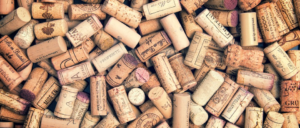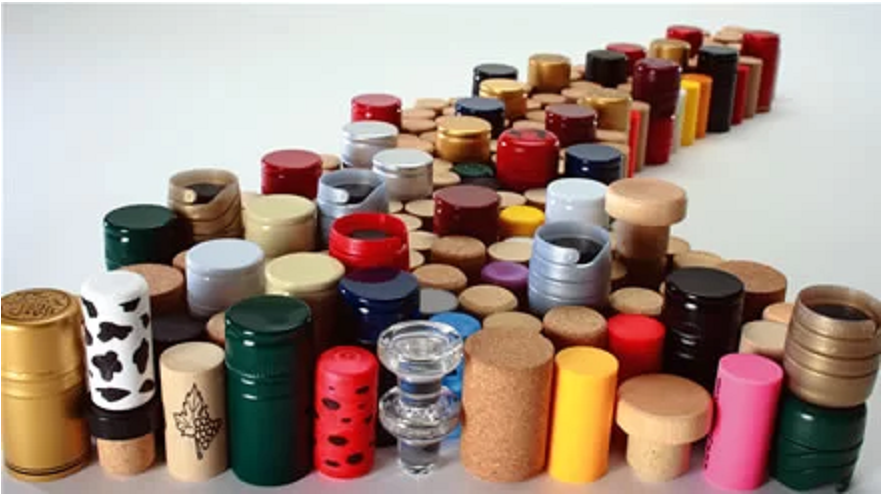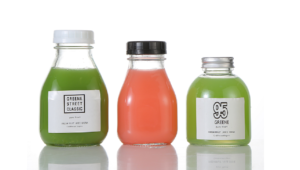Have you ever been curious, why wine bottles are sealed with different closures? Some with corks, but some with screw cap. Today, let’s together go further with the wine closure types.
Wine closures affect wine’s ageablity
Before we starting with the advantages and disvantages of different wine bottle closures, first let’s be aware of the importance of wine stoppers.
The different ways of sealing wine bottles affect the oxygen exchange rate through that closure. This is important because, as the famous French scientist Louis Pasteur discovered, oxygen is the principal accelerator of wine aging. So aside from possible cork taint, oxygenation potential has become one of the most dynamic criteria for choosing alternative or artificial corks in the last two decades. After all, oxygen is carefully managed throughout the winemaking process, so why wouldn’t it be considered once the wine is ready to ship to the consumer?
Oxygen affects the color, aroma and mouthfeel of wines.
- Color – Too much oxygen can promote premature browning. Think of a cut apple oxidizing.
- Aroma – Just enough oxygen can encourage attractive development in young wines. Too much causes oxidization, which flattens and subdues the nose’s vibrancy.
- Mouthfeel – A Goldilocks-like amount of oxygen enhances the palate by softening it, especially in tannin-rich wines.
The Most Common Wine Closures
In Australia, the majority of Penfolds’s, a famous wine brand, red wines, which include offerings priced well into triple digits, are sealed by screw cap. In the U.S. market, however, those same wines are sealed under natural cork. Why? Because many Americans still believe screw caps signify low-quality wine.
As the saying goes, you shouldn’t judge a book by its cover. But should you judge a wine by its closure? Cultural preconceptions aside, the stopper can tell a great deal about the wine it encloses. It can hint at longevity, quality, culture and history.
We spend the most of our time focused on what lies within the bottle. For once, let’s get to know what sits above it. Here’s your guide to the world’s most popular wine closures.
1–Natural, or Traditional, Wine Cork

Description
The original cork and the choice of self-proclaimed purists
Sourced from Quercus suber oaks, primarily from the Iberian Peninsula – especially Portugal – and North Africa. Trees must be a quarter of a century old before their bark can be “harvested” then can be stripped only once every nine years. Stripping does not harm the trees.
- Pros
- Excellent “breathability”
- Comes in different quality (and price) levels as well as lengths, with longer ones available for age-worthy wines and wider ones for larger format wines
- Relatively good insertion and extraction of the cork
- Offers the romance of the cork “pop”
- Allows for the preservation of cork forests and rural jobs in small villages
- Ensures that the cork forests continue to offer homes for Iberian lynx, Iberian imperial eagles and Barbary deer, among other wildlife. World Wildlife Federation notes that cork forests are among the few examples on globe where human activity benefits the landscape.
- Recyclable
- Cons
- A potential harbor for the extremely unpleasant 2,4,6-trichloroanosole (TCA) compound that taints wine, making it “corked”
- Hard to get the best corks between the long line of producers and the considerable price they command
- Consistency cannot be guaranteed with the same degree of certainty as alternatives because it is a natural product
- Lubricants like silicon and paraffin can improve extractability – which sommeliers appreciate in the theater of restaurant dining rooms, but which can also cause oxygen ingress
Random oxidation of bottles, particularly problematic for age-worthy white wines
2–Technical Wine Cork

Description
Made of natural cork particles
Idea is to replicate the look and feel of a traditional cork
The best are more and more frequently the top choice for conscientious winemakers who prefer to bottle with a natural cork alternative rather than under screw cap
- Pros
- Can chose desired – and guaranteed rates of – breathability, in high end ranges like DIAM and Amorim Neutrocork-Premium
- The very best lines guarantee they are TCA- and fault-free
- Retains the romance of the cork “pop”
- Helps keep the cork forests cultivated and preserves the homes of indigenous wildlife
- Recyclable
- Cons
- Low-end and mid-range options could be TCA affected
- Also known as “agglomerates” because the corks are composed of tiny cork particles glued together. Highly sensitive sniffers can smell the glue.
- Some technical corks, especially with those that have a solid disk(s) of natural cork glued on one or both ends, can look cheap
- Sometimes not easy to use to recork bottles
3–Synthetic Wine Cork

Description
Outer “skin” and inner foam are made from two different materials
Exterior skin is usually polyethylene based
Interior may be made of renewable, sustainable materials, such as the sugarcane-based fibers used by “green” line at Nomacorc.
Permeability/breathability more consistent than with cork and other synthetic corks
- Pros
Very good precision of material density and performance
Come in a wide variety of densities and prices
Like natural and technical corks, can be printed on
Uniquely, can be ordered in a wide range of colors
Can be chamfered, or tapered, for easy re-insertion into bottles
Recyclable
- Cons
The polyethylene used can taint wine, as can smells picked up by synthetic closures during shipment
Wine aroma scalping can also occur, where the synthetic material extracts aromas from the wine
Must have correct wine style, expected time prior to consumption and stock rotation for synthetic used
Partially or entirely a petroleum product that can vary in price and is non-renewable
Corks that are not chamfered are hard to use to recork bottles
4–Screw Caps & Stelvin Wine Closures
Description
Stelvin is the brand name of the original screw cap
A foam-like liner seals the bottle opening (pinch it out with fingernails or tweezers!), not the two metal parts that crack apart
- Pros
Zero cork-induced TCA stink
Easy to open and close
Can brand just like you would a capsule and cork
Smooth-sided cap options hide threads, creating a more polished look
Don’t need to store wine on its side
Doesn’t deteriorate like natural cork
Can chose breathability of cap liners to optimize drinking windows
Has shown to be an age-worthy wine closure on both red and white wines
Tamper-evident fitments help prevent counterfeiting, as with Roll On Pilfer Proof (ROPP) aluminum closures
Recyclable
- Cons
Reduction, or the tamping down of aromas, is very common
Flute-shaped (deeply sloped, like for the Vintner’s Reserve Riesling) wine bottles more easily incur dents on the capsule closure, possibly causing the liner seal to pop and resulting in an oxidized wine
5–VinoSeal & Vinolok Wine Closures

Description
Plastic o-ring makes the seal for this glass-on-glass closure
Frequently used on flute-shaped bottles
- Pros
TCA-free
Easy to open
Elegant look
Reusable glass stopper – or the same or on another bottle
Recyclable
Wines develop more slowly due to little oxygen transfer
Wide array of sizes for different bottle neck sizes
Comes in different colors and frosted versions
- Cons
Like screw caps, makes wines prone to reduction, which flattens aromatic intensity
Heavier than other closure alternatives, adding to carbon emissions
6–Zork Wine Closure

Description
A unique, innovative and synthetic closure that is goes by its brand name
The convenience of screw cap with the pop of a cork! Has foil welded between the cap and plunger to ensure a long shelf life. Foil helps it to seal like a screw cap while the plunger makes a pop like a cork.
Cool packaging developed in Australia that has largely remained there
- Pros
Tamper evident
Easy to open
Claim their polyethylene formula does not taint wine aromas
Unique look promotes consumer curiosity
Recyclable
- Cons
More expensive and more complicated for producers to use on a regular bottling line, so harder for consumers to find!
Petroleum-based
7–Helix Wine Closure

A twist-off cork that requires no corkscrew, created in 2016 by the world’s largest Portuguese cork manufacturer, Amorim, and the world’s largest glass-bottle manufacturer, Owens-Illinois Inc.
Conclusion

As is often both charmingly and irritatingly the case in wine, the answer to which wine bottle closure is the best is “It depends.”
So this leaves us with the question everyone is asking: which is better? The advantages seem to favor the screw cap as more wine drinkers aren’t storing wines for long periods of time, but natural corks still have their place and mystique. No matter whether it’s sealed with a cap or a cork…a good bottle of wine can liven up any party or meal.
We are China glass bottle manufacturer, producing various premior glass bottles and jars, wholesale wine bottles at factory prices, with different bottle closures available. Also, custom glass bottles can do if you want. Your brand labels, prints on bottle surface, we can do. Welcome your inquiry.




